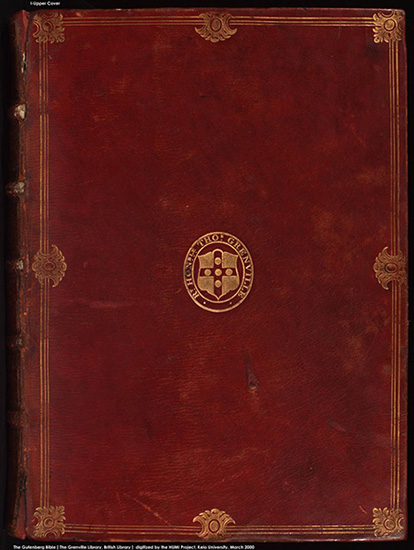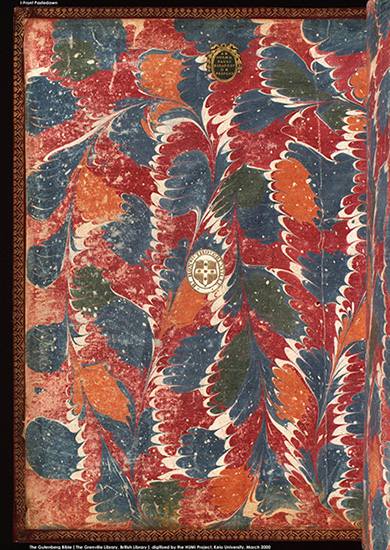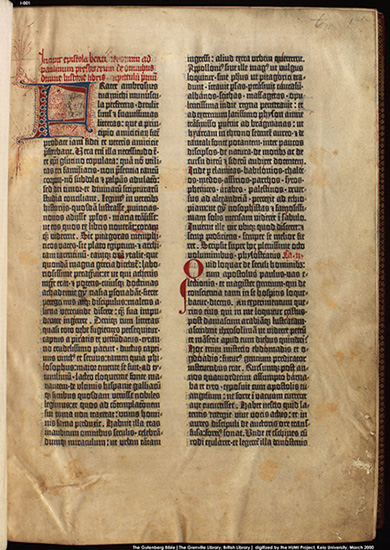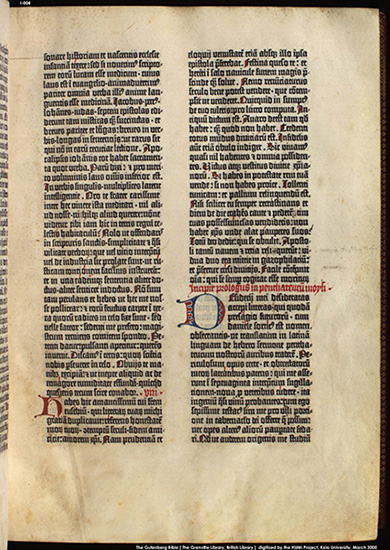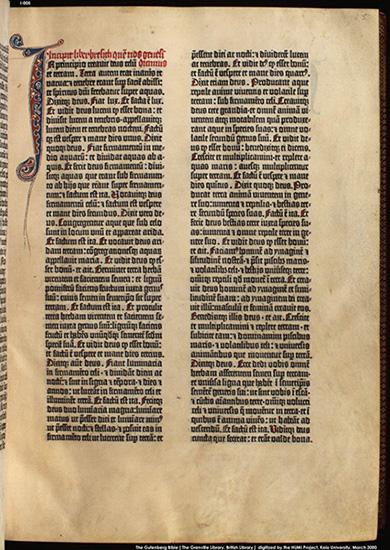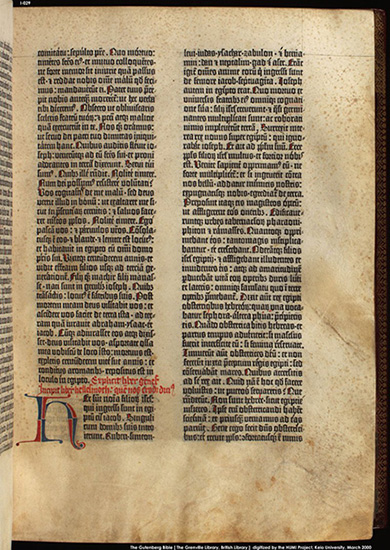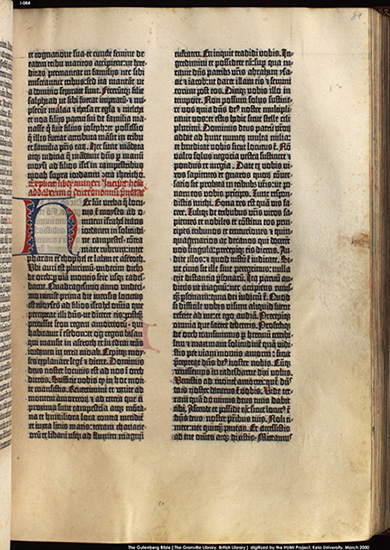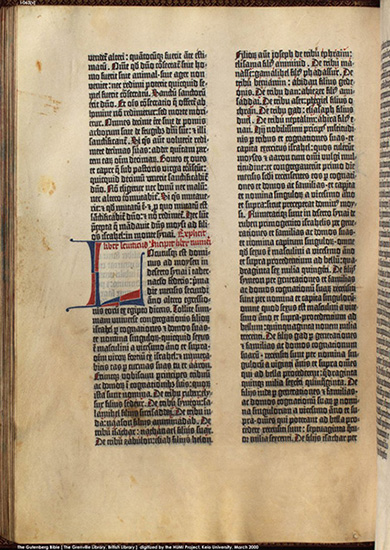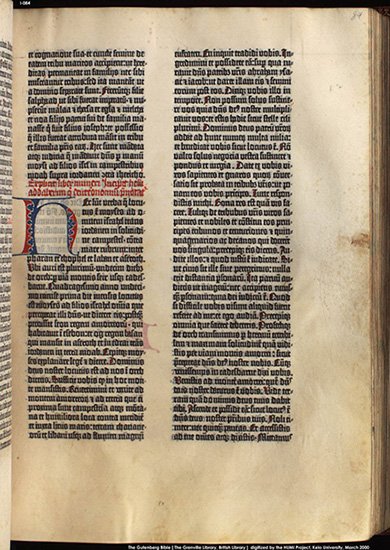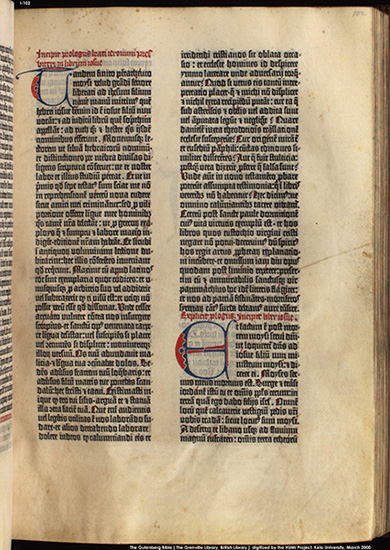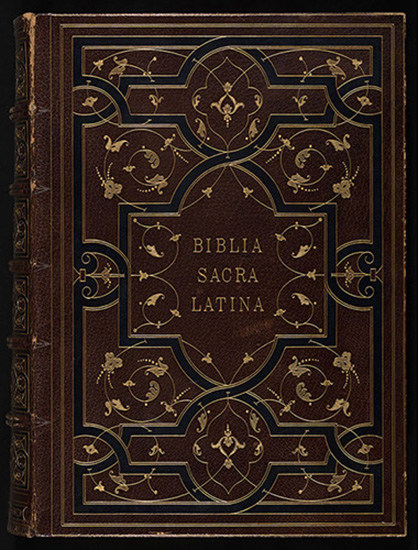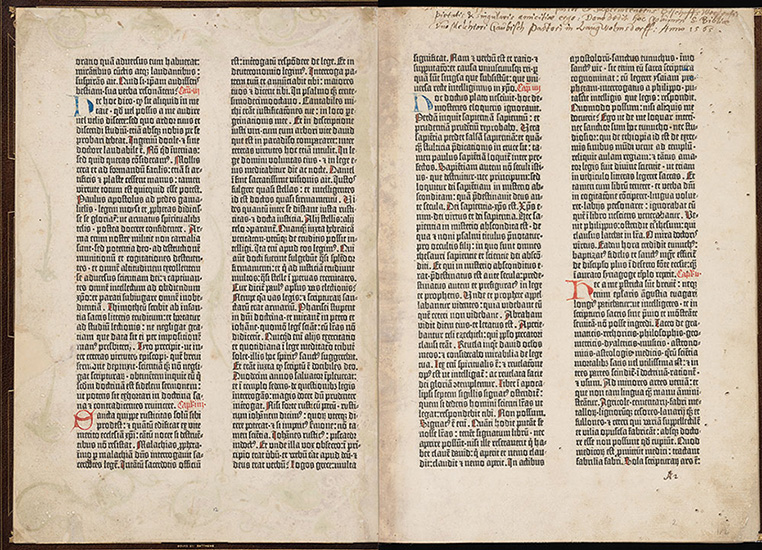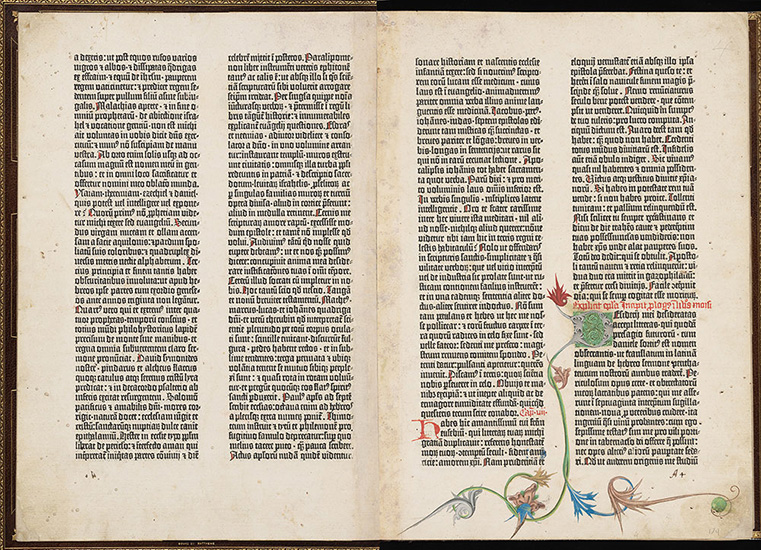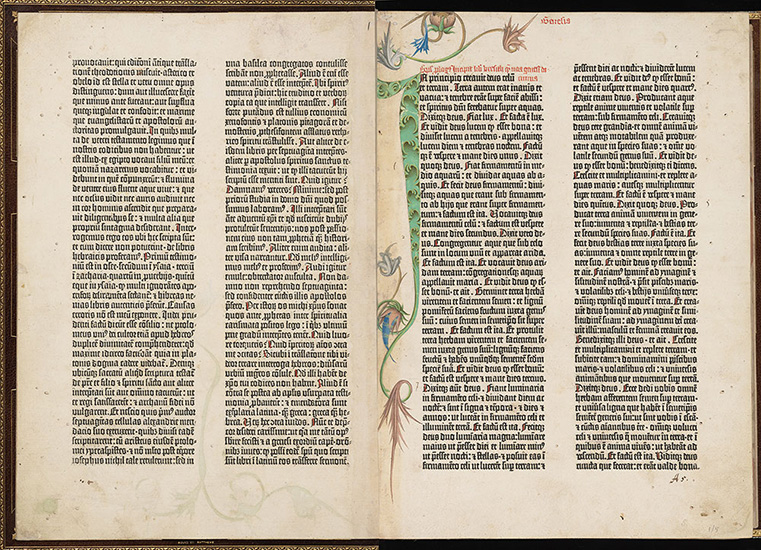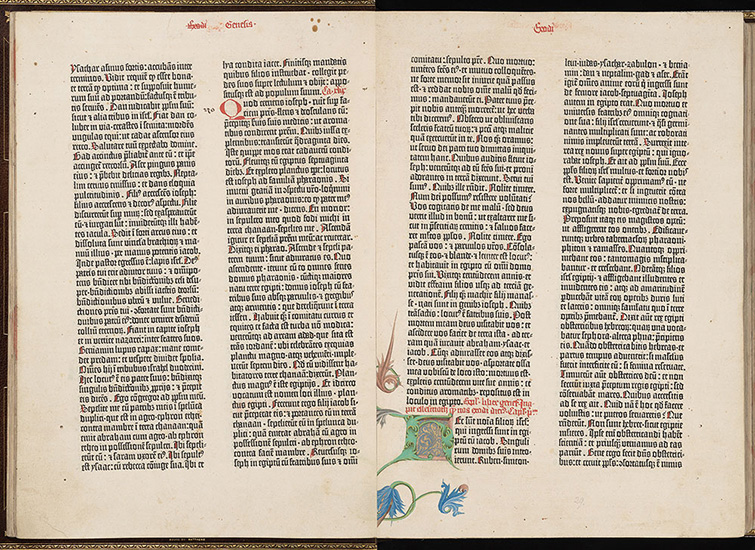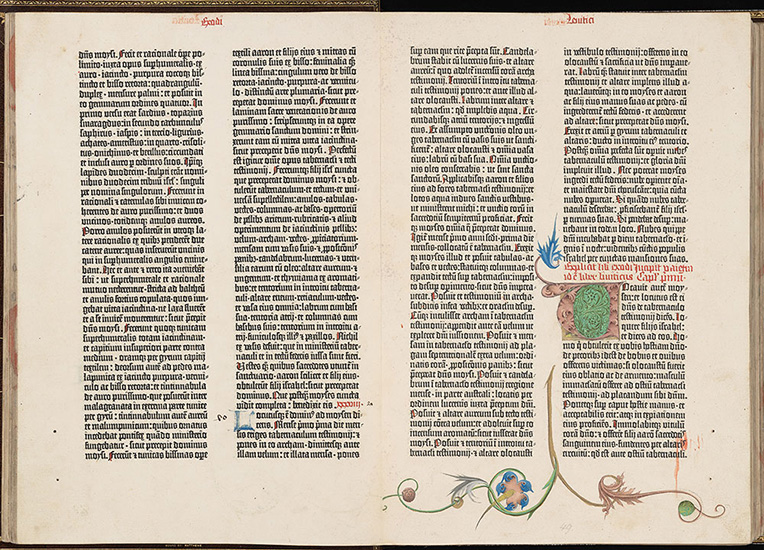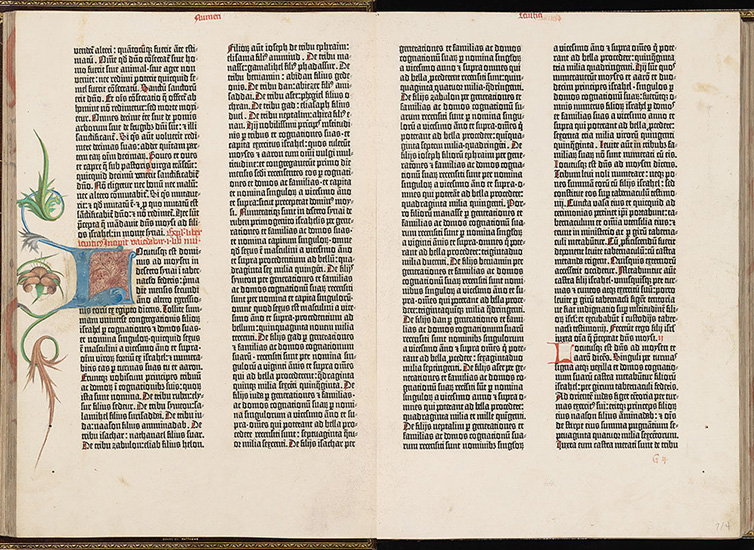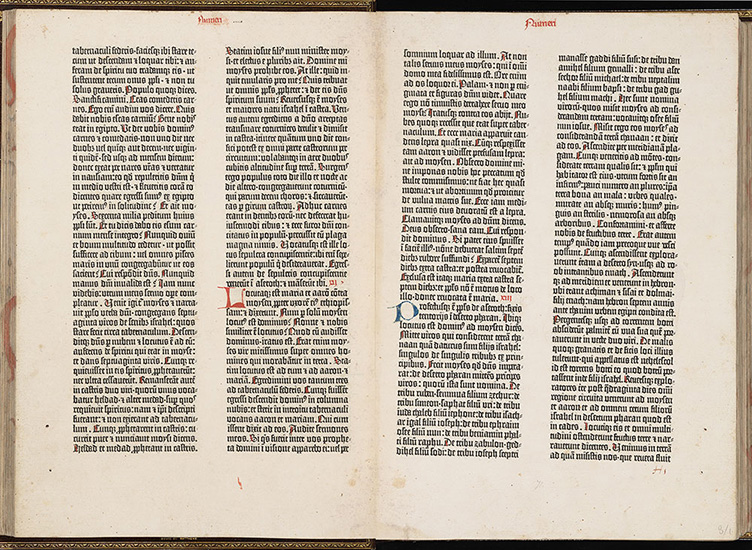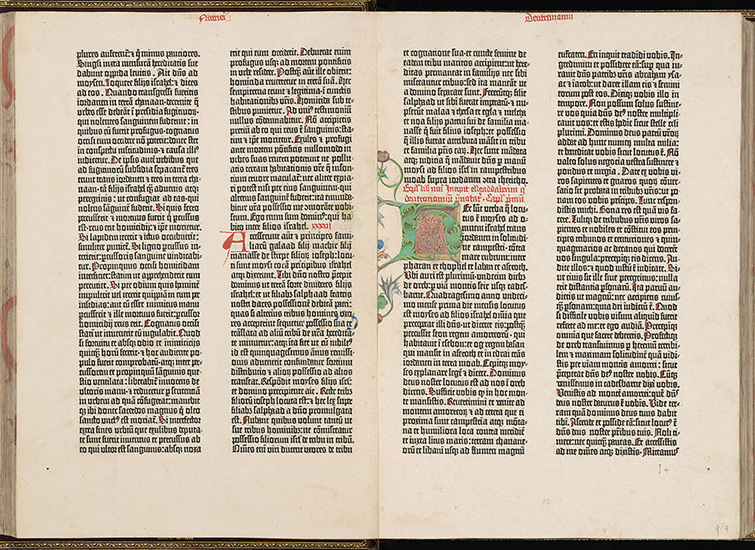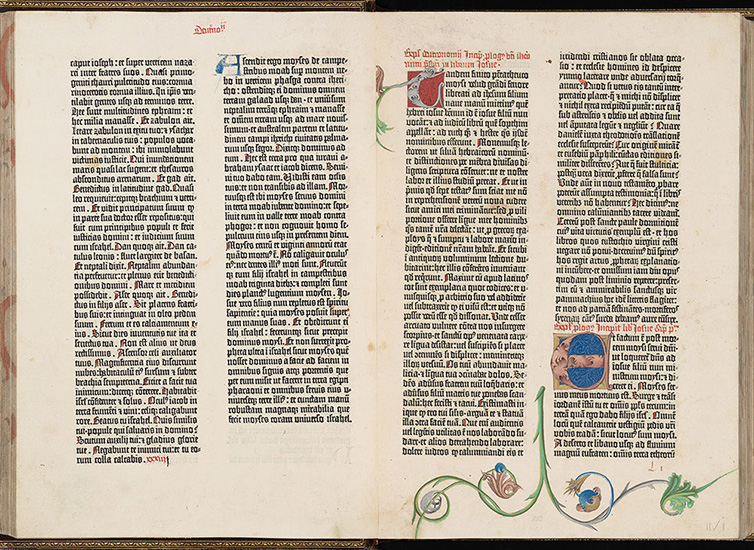Although the standard language utilized in the 15th century Europe was Latin, the majority of people at the time faced a literacy barrier that seemed impossible to penetrate as Latin was the language exclusively for scholars, bureaucrats, and highly educated religious people. Gutenberg’s invention of the printing press, however, had facilitated the firm establishment of highly organized structure, order and parallel components of many languages in modern society. Hence, the outbreak of commercial employment of the printing press had substantially encouraged the innovation of diverse languages and education that, in turn, broke the barrier of literacy-related problems.
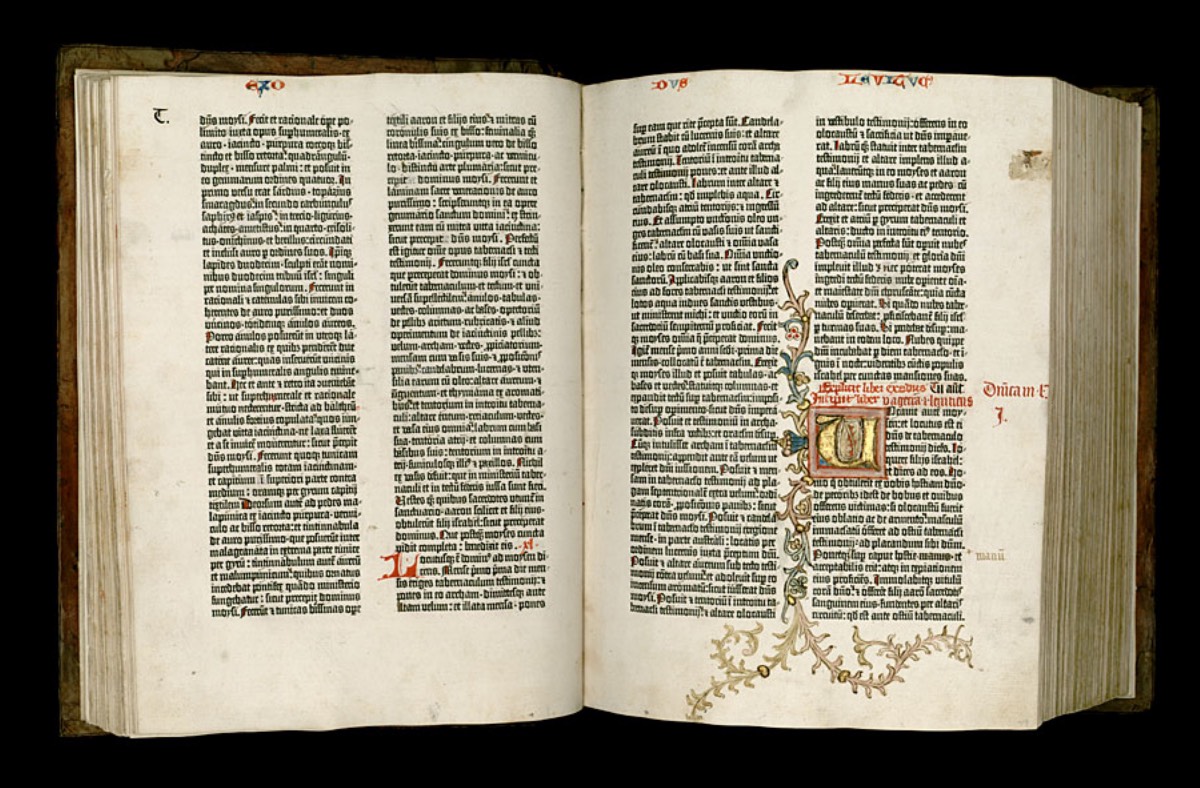
The Gutenberg’s Bible taken from Harry Ransom Center at the University of Texas’ Bible, n.d., Reinart.
The Gutenberg Bible in hardcover digitized by the HUMI Project at Keio University, 2000, British Library.
Bliblia Latina in hardcover, 1455, The Morgan Library & Museum.
